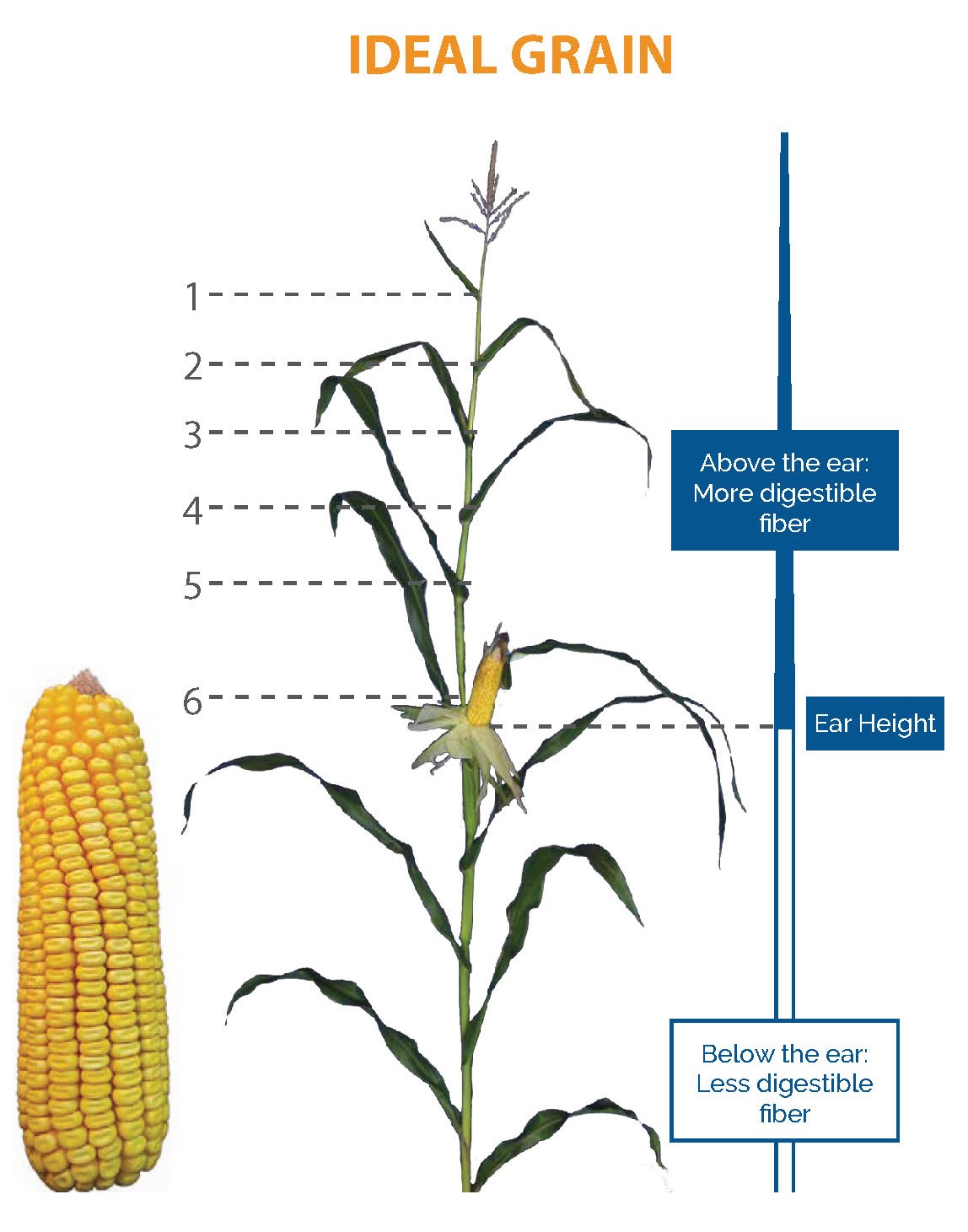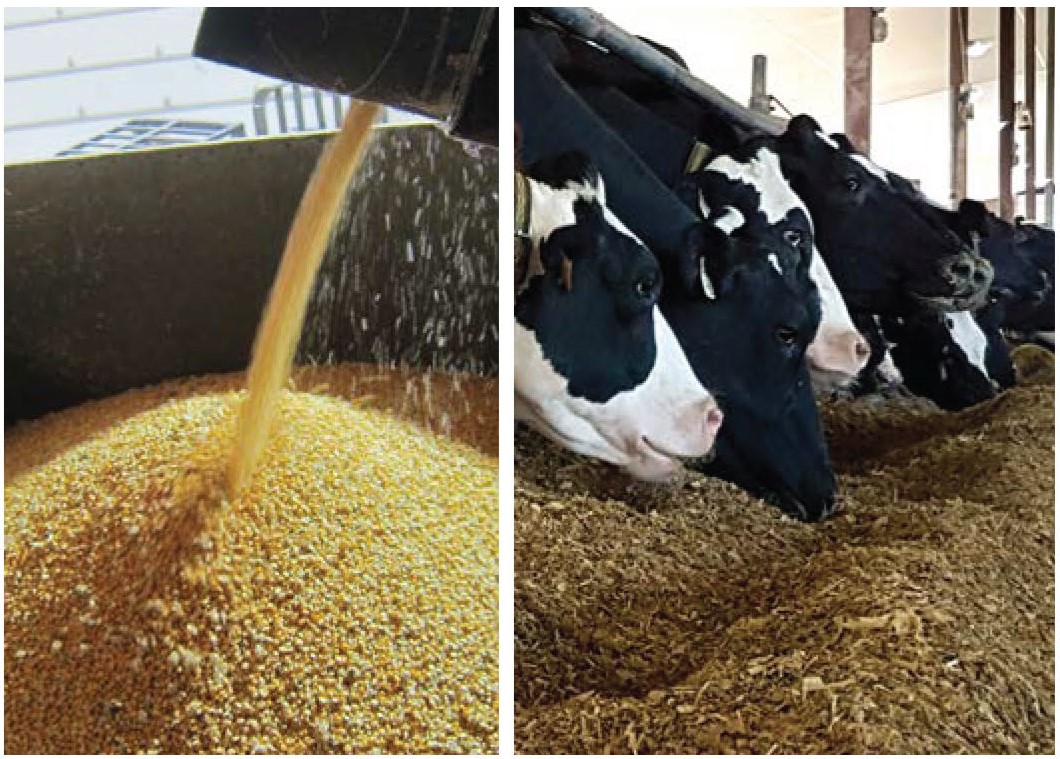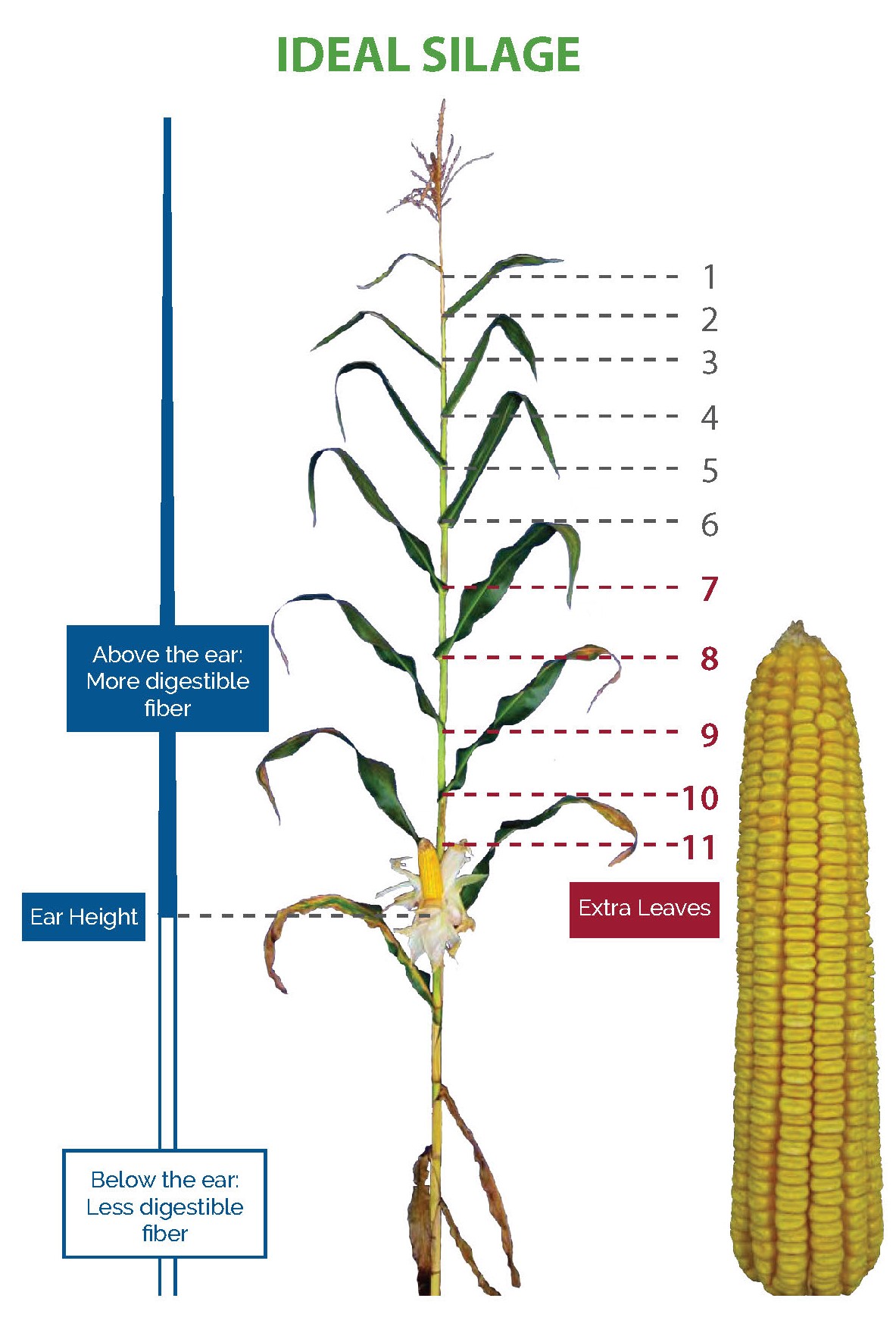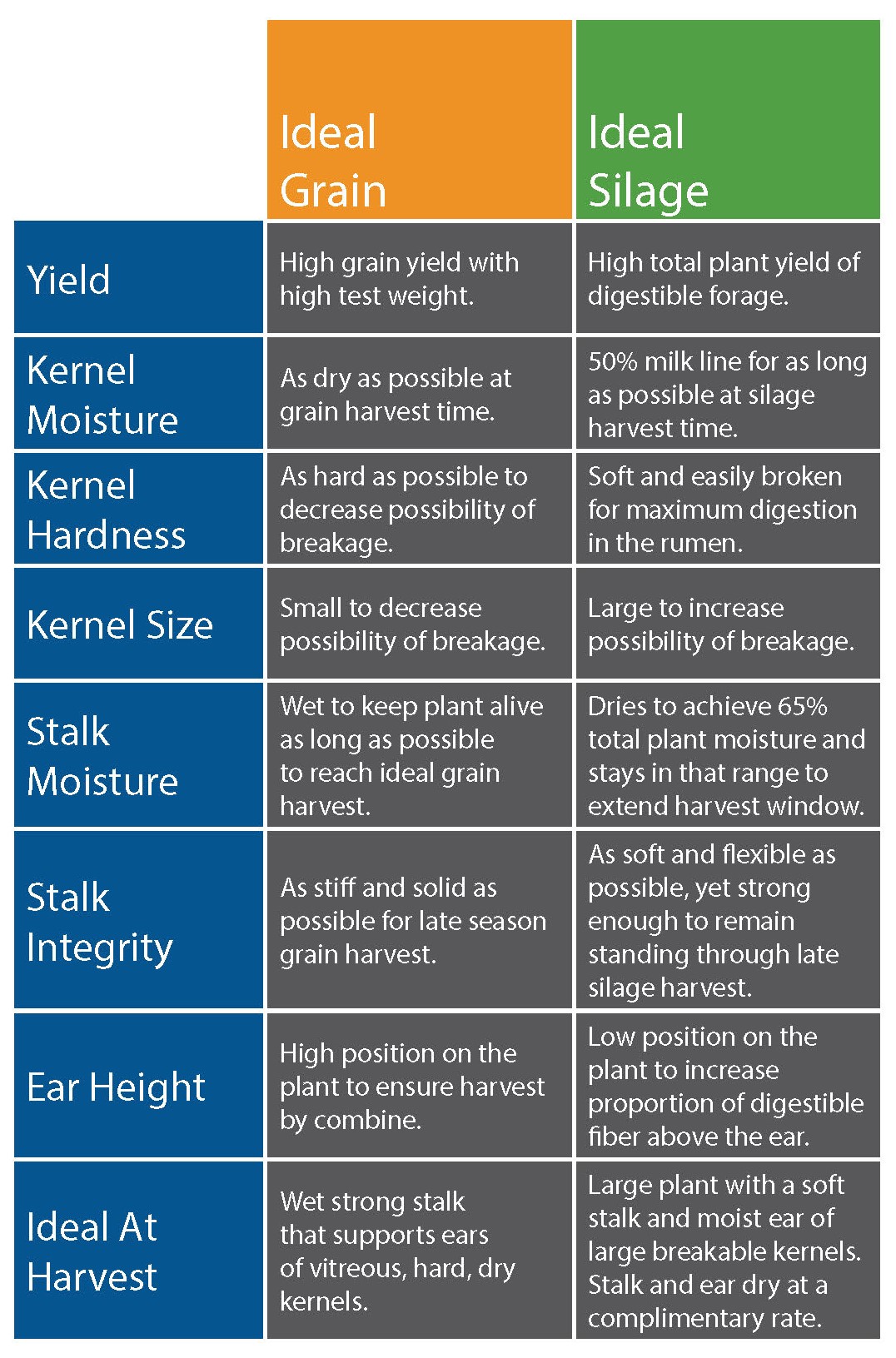
Apr 10, 2023, 3:00 PM
Grain vs. Silage Corn
Breeding has a profound effect on the architecture and behavior of a corn hybrid. As a result of very different breeding goals, ideal grain and ideal silage hybrids have mostly OPPOSING characteristics.
Dr. Francis Glenn compares a grain hybrid to a Floury Leafy Corn Silage Hybrid.
BREEDING FOR GRAIN
Approximately 92% of North American corn acres are grown for grain. In order for a grain hybrid to perform, it must have durable kernels that will stay intact during combining, shipping and elevating. These kernels must also dry quickly to save on the cost of mechanical drying. To ensure the successful harvest of a grain crop, breeders select grain hybrids to have stiff stalks that will stand late into the season. These hybrids are also designed to have a relatively high ear placement on the plant for ease of combining. Grain farmers are paid on the basis of kernel integrity, test weight and kernel moisture. To meet this bill, a successful grain hybrid must have three key kernel characteristics: they must have a vitreous, or glass-like kernel type (which makes them hard, tough and heavy), the kernels must be relatively small (to further reduce the likelihood that they will fracture during mechanical processing), and they must dry rapidly on the plant as it reaches maturity (to save on drying costs). Grain-type hybrids, with their small, fast drying, vitreous kernels, are ideal for delivering high quantities of starch in compact transportable packages to distant markets.
 Dual purpose hybrids bred for grain do not make ideal silage. Here's why:
Dual purpose hybrids bred for grain do not make ideal silage. Here's why:
THE STARCH
As a grain hybrid reaches silage maturity, its kernels dry rapidly and get very hard. This rapid drying creates a very narrow silage harvest window, which is further complicated by the extended stay green of the grain hybrid's stalk. Often, when the kernels reach a silage appropriate moisture, the plants are too green and wet to put in the bunker. If the plant is harvested once the plant reaches silage-appropriate moisture levels, the kernels have likely become hard and dry. While the kernels may have a high starch test weight, they remain whole or fracture into large pieces during silage harvest and cow chewing. In this form, much of the starch is unavailable to rumen bacteria. In order to soften these large hard chunks of starch, a minimum storage period of six months is recommended. This long storage period increases storage space requirements and dry matter losses, and does not guarantee ideal starch quality by the time it is fed. Starch can be made more digestible by processing, but this damages effective fiber and does not consistently reduce starch to a particle size that is comparable with a hybrid that has a more digestible kernel type.
THE FIBER
A successful grain hybrid is bred to withstand the elements until late season harvest, which requires the stalk to be stiff and solid. In addition, its ear must be positioned high on the plant to ensure successful harvest by the combine. Both of these requirements reduce fiber digestibility. The ear is the heaviest part of the plant, so the below ear portion of the stalk must be heavily lignified in order to support it. By raising the ear position and selecting for stiff stalks, grain hybrids produce a high proportion of indigestible fiber.
It can be difficult to harvest a grain hybrid for silage when its stalks are at the appropriate moisture level. It can pass from too wet to too dry rapidly and this reduces silage quality and feed efficiency. Excessively wet or dry silages often result in inadequate fermentation and unstable silage products.
BREEDING FOR SILAGE
 |
| Grain hybrids produce tough kernels that remain unbroken during transport, while silage hybrids produce kernels that are easily broken and digested. |
Roughly 8% of North American corn acres are grown for silage. Ideal corn silage harvest occurs when the crop has reached 65% moisture and 50% kernel milk line. During this harvest window, the whole plant is cut low to the ground and is chopped into small pieces before being packed into a silo or bunker. Then the corn is ensiled and mixed into a TMR and fed to a herd for a season or more. Given this process, an ideal silage hybrid must satisfy an entirely different set of parameters than a grain hybrid. It must have a high total plant yield of digestible starch and fiber, a long harvest window in which the plant dries to the appropriate moisture and remains there for an extended period, adequate sugars to promote fermentation, and a relatively short storage period to save on space and reduce dry matter losses. Ultimately, a corn silage hybrid must produce a reliable high-yielding, fermentable crop that when fed to cows promotes healthy and efficient rumination that is conducive to the production of a high quantity of high quality milk and beef.


Commercial grain hybrids cannot be the best silage hybrids since breeders select mostly opposing physical characteristics during breeding and testing.
Legend Seeds is proud to offer a diverse portfolio of products and services that are important to livestock producers who value quality feedstuffs. We offer:
• Access to world-class genetics and technologies to ensure great profit potential
• Locally proven products and extensive product research
• Variety and flexibility in our product portfolio
• Agronomic expertise focused on the value of great nutrition
Visit our Silage page to learn more.
Reference: Glenn Seed

